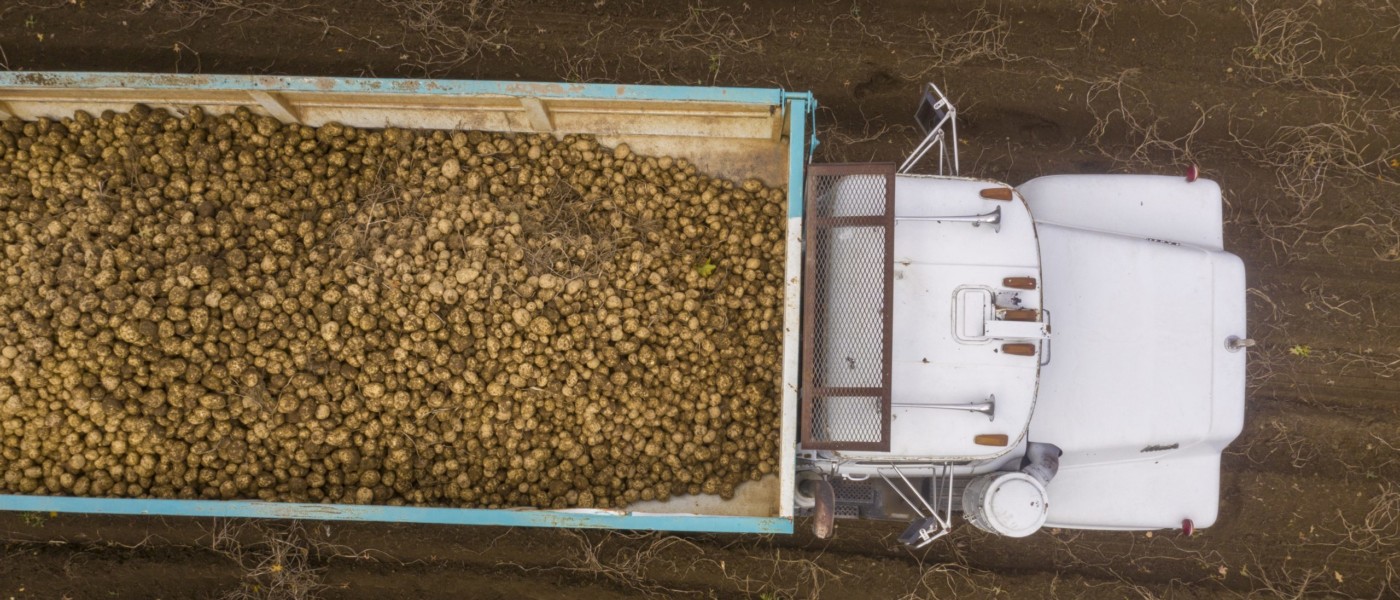Devastating photos of dairy farmers dumping milk and produce farmers tilling their plants into the soil have understandably caused outrage and sorrow. The first thing to understand is that NO farmer chooses this path. Nothing pains a farmer more than a lost crop or product, particularly one that they themselves must plow under or dump down the drain.
The idea of wasting something as precious as food, especially when there is so much unmet demand for healthy food, is painful to all of us. Many outraged people have pointed fingers, either at farmers or at food banks that can’t find ways to make use of that food.
While the anger is understandable, assigning blame doesn’t help, and no one person is to blame. Unfortunately, there are no quick solutions. But there are people working on this challenge, starting with farmers, food banks, commercial kitchens and other folks on the ground who are figuring out ways around huge logistical hurdles. Members of Congress and the U.S. Department of Agriculture (USDA) are working on policies and programs to make sure that good food does not go to waste, that farmers receive payment for their products, and that people who need food can access it.
How did we get here?
COVID-19 has completely upended our food system. According to USDA, in 2018 Americans spent more on food from full-service and fast-food restaurants ($678 billion) than at grocery stores and warehouse clubs ($627 billion). The amount spent on food away from home was even higher when we count meals at schools, colleges, sporting events and other food service venues. Now suddenly, many more people are cooking at home.
With closures of schools, restaurants, hotels, universities and other large institutional food buyers, a lot of farmers lost their regular customers overnight. While many of those farmers are valiantly figuring out new ways to sell directly to consumers, it’s often not an equal exchange. Farmers are incurring costs to create these new systems, and many are not able to sell the same quantity of product.
Farms that normally sell in large volumes are not set up to meet the needs of individual consumers, and making that switch is sometimes just not possible. Think of the tomato farms that sell hundreds of thousands of pounds of tomatoes to institutional buyers each week. Or the onion farms that meet the fast food industry’s need for onion rings. Other farms need a processor in the middle because they can’t sell their raw product off the farm. For example, dairy farms need a processor to homogenize, pasteurize and bottle the milk before consumers can buy it.
Systems set up for packaging and distributing foods cannot be changed overnight to keep up with the sudden shift in where people are eating now–at home. For instance, the egg industry makes liquid eggs packaged in huge quantities for food service. Those are no longer being purchased (and they’re not packaged for home use), leaving millions of eggs unused. As a result, the poultry industry is beginning to euthanize chickens to stop the waste. Without fast food meals, billions of pounds of potatoes that would normally be made into French fries are waiting to be harvested. There’s nowhere for them to go with storage already at capacity. In the dairy industry, whole dairy processing plants are set up to produce half-pints for school lunch. The processing line cannot be changed at a moment’s notice to instead produce the half-gallons and gallons that are needed for consumer purchasing at the grocery store. To re-purpose these systems would require millions of dollars in investment.
As far as the impact on farmers, dairy farmers will tell you, there’s no off switch—cows keep producing milk and need to be milked twice a day. That’s why dairy processors are telling their farmers to cut their production (most easily accomplished by dumping milk down the drain).
Farms that normally sell in large volumes are not set up to meet the needs of individual consumers, and making that switch is sometimes just not possible.
In the livestock industry, processing plants across the country have had to slow down production, limit their capacity, and even shut down altogether as the virus infects their workforce. For many of these processing plants, there is no way for the workers to do social distancing. Standing on the processing line means standing elbow to elbow with your coworkers. Even before this pandemic, the meat processing industry has had a long record of disregard for its workers, including unsafe working conditions, low wages, a lack of benefits and little or no access to protective equipment. According to an internal estimate from the United Food and Commercial Workers (UFCW), 20 unionized workers have died of COVID-19; over 5,000 meatpacking workers total have tested positive for the virus, have been hospitalized, or are otherwise symptomatic, with another 1,500 food-processing workers in similar straits.
When one of these large meatpacking facilities is forced to close, it has an out-sized impact on both farmers and eaters thanks to the intense consolidation of the industry in recent decades, which drove out small- and mid-sized processing plants. As a result, the supply chain is breaking down, with farmers not able to send their livestock to market and the possibility for empty shelves at the grocery store.
Additionally, the same challenges exist in these plants as far as meeting the new demand for home cooking, rather than food service cooking. A plant designed to produce large boxes of chicken wings for restaurants and cafeterias can’t pivot on a dime to package smaller quantities for home cooks. Meanwhile, as processing slows or stops, farmers are faced with hard decisions: If they keep feeding their animals past the time they would normally be slaughtered, they’ll spend more money on production costs. And farmers run the risk of their animals beginning to lose value as they grow too large for the very specific standards our industrialized food system dictates.
For those farmers who consider donating their products to local food banks and pantries, similar logistical challenges come into play. Food banks and pantries are not able to take in all that farmers can give, with limited refrigerator and freezer space and fewer volunteers due to the pandemic. The costs of harvesting, processing and transporting produce and milk to food banks puts additional costs on farms that have already lost their paying customers (and have suffered years of below-average prices). Some farmers have been forced to leave food in their fields because without a market for it they can’t pay for labor to harvest or transport. Just finding labor has been an increasing challenge for farmers in recent years and now, with COVID-19, strict border controls have exacerbated labor shortages.
Learn more about immigration and our food system
What Can Be Done?
First off, don’t lose hope (and remember, don’t assign blame—no one wants good food to go to waste, for farmers to go broke and for people to go hungry). All around us, positive things are happening to rectify this situation—it just takes time, creativity and also investment!
Here are some examples that are giving us hope:
In upstate New York, a fundraiser has made it possible for Lively Run Dairy, an artisan cheesemaker, to purchase milk from local farms that would have otherwise had to be dumped, make cheese and donate it to food banks!
In Wisconsin, our friends at the Hunger Task Force will spend up to $1 million on dairy products through the new Wisconsin Dairy Recovery Program. The program will purchase milk and other products from dairy processors in the state and distribute them to local food pantries. This idea came about as the Hunger Task Force received many donations to address hunger while they simultaneously witnessed dairy farmers suffering incredible losses.
Across Appalachia, our partners at Appalachian Sustainable Development are making use of their food hub and trucking capacity (and the generosity of donors) to purchase healthy fruits and vegetables from Appalachian farmers and donate it to food banks with capacity to take in fresh food.
At the federal level, the USDA is making changes so that federal nutrition programs (like SNAP) can provide expanded benefits and go out to more families. These nutrition programs have important economic benefits beyond the families they’re intended to help. A 2019 USDA study examined the multiplier impact of a hypothetical $1 billion increase in SNAP benefits and found that this expansion of benefits during a slowing economy would increase Gross Domestic Product (GDP) by $1.54 billion and support 13,560 jobs, including nearly 500 agricultural jobs (farming, forestry, fishing, and hunting). The expanded benefits would also boost income in the agriculture industries by $32 million.
The USDA also announced in mid-April that the government will spend $300 million per month to buy fresh produce, dairy and meat products that will be packaged into boxes for food banks and other organizations who care for food insecure families. The program will purchased an estimated $100 million per month in fresh fruits and vegetables, $100 million per month in a variety of dairy products, and $100 million per month in meat products. Unfortunately for some farmers, the program has not been implemented quickly enough to prevent major losses of crops and income.
The Way Forward
During this pandemic, local and regional food systems have shown extreme resilience, and the farmers operating in them have adapted quickly to keep food growing and reaching our plates. While huge livestock processing facilities are shutting down because their workers cannot be properly protected due to the way these systems are set up, small scale local processing can occur safely. Diversified produce farmers who offer CSAs are seeing their shares sell out. Farmers that can deliver their product locally are experiencing huge demand. These farmers are also speaking up about the inequity of our food system and figuring out how to feed communities that struggle with access to good food.
Farmers are showing us the way forward—towards a resilient food system that can sustain our future and provide solutions to the inequities and injustices of our global food system that have been laid bare as a result of this pandemic.
Further Reading
Read “Food Distribution 101: What Happens When the Food Supply is Disrupted by a Pandemic” from Civil Eats



